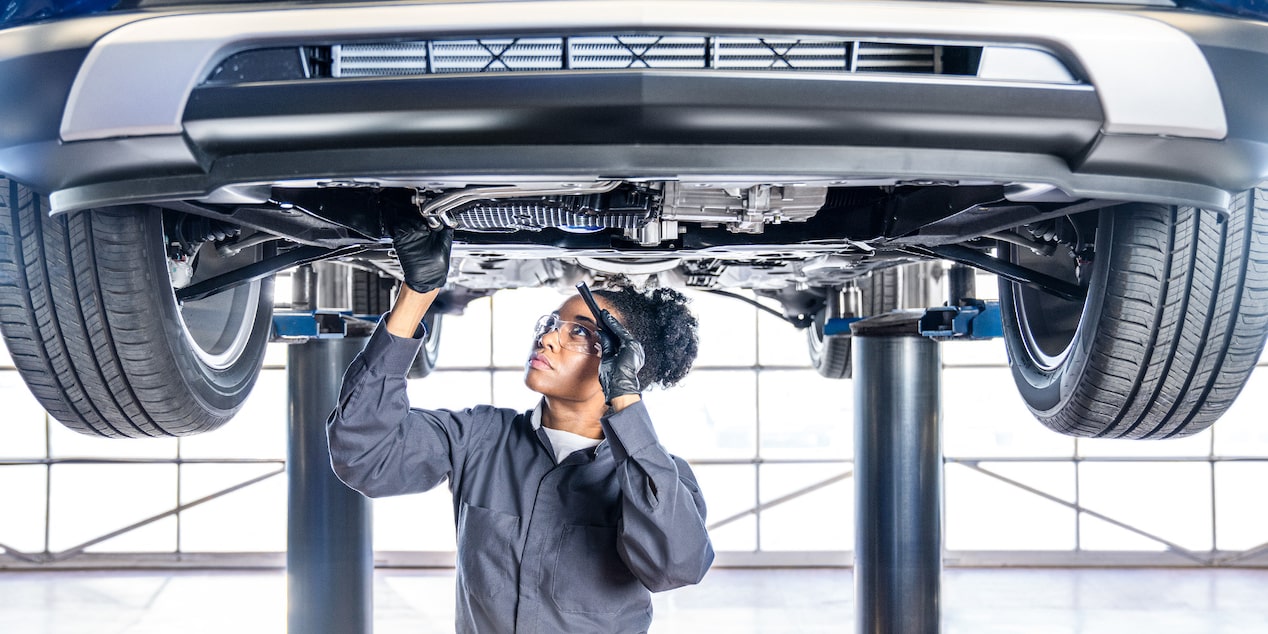All Categories
Featured
Your car's shock absorber plays a vital function in delivering a stable and smooth experience, making sure that you maintain control on different terrains. It takes in road shocks, supports the lorry's weight, and maintains tires in contact with the roadway. Correct maintenance of this complicated system is essential for security and efficiency. Follow these steps to guarantee your suspension system continues to be in optimal condition.
![]()
Leaking Fluid: Shocks or struts may leak oil when they're put on. Harmed Springs: A drooping or irregular position may show a broken spring. Used Bushings or Sphere Joints: Cracks, tears, or uncommon activity throughout operation recommend wear. Rust or Deterioration: In time, metal parts may corrode, causing weakened components. Deal with any kind of problems immediately by seeking advice from a specialist mechanic.
![]()
Feathery Footstep: Indicates poor placement. Hairless Sides: Suggests worn shocks or shows off creating too much jumping. Rotate your tires consistently and preserve the right tire stress to lower stress on the shock absorber. 3. Replace Shocks and Shows Off When Needed. Struts and shocks are essential to your suspension's efficiency. Indications they need replacing consist of:
A bouncy or rough ride. When stopping, nose-diving. When transforming, too much body roll. Replacing these components at the recommended periods (every 50,000 to 100,000 miles, relying on driving conditions) can restore ride top quality and handling.
Prevent driving over gaps, visuals, and speed bumps at high rates. Take corners carefully to protect against excessive lateral forces. Decrease on rough roads to minimize deterioration. 6. Schedule Routine Alignments. Wheel placement makes sure that your tires and suspension work harmoniously. Misaligned wheels can create guiding problems, uneven tire wear, and additional tension on suspension elements. Schedule a positioning check annually or after striking a considerable fracture.
![]()
Conclusion. A well-maintained suspension system improves driving comfort, boosts safety, and prolongs the life of your car. By remaining aggressive with inspections, addressing problems without delay, and driving sensibly, you can maintain this crucial system for several years to find. Buy correct suspension upkeep today, and delight in a more secure, smoother ride on every trip.

- Examine Suspension Parts On A Regular Basis. Regular visual examinations can help recognize possible troubles early. Search for the adhering to signs:
Leaking Fluid: Shocks or struts may leak oil when they're put on. Harmed Springs: A drooping or irregular position may show a broken spring. Used Bushings or Sphere Joints: Cracks, tears, or uncommon activity throughout operation recommend wear. Rust or Deterioration: In time, metal parts may corrode, causing weakened components. Deal with any kind of problems immediately by seeking advice from a specialist mechanic.

- Screen Tire Use. Uneven tire wear usually points to suspension troubles. As an example:
Feathery Footstep: Indicates poor placement. Hairless Sides: Suggests worn shocks or shows off creating too much jumping. Rotate your tires consistently and preserve the right tire stress to lower stress on the shock absorber. 3. Replace Shocks and Shows Off When Needed. Struts and shocks are essential to your suspension's efficiency. Indications they need replacing consist of:
A bouncy or rough ride. When stopping, nose-diving. When transforming, too much body roll. Replacing these components at the recommended periods (every 50,000 to 100,000 miles, relying on driving conditions) can restore ride top quality and handling.
- Avoid Overloading Your Car. Overloading your vehicle places unnecessary stress on the shock absorber. Surpassing your car's weight capability can lead to early wear and lowered performance. Always examine your proprietor's handbook for the maximum lots limitation and pack appropriately.
- Bear in mind Your Driving Routines. Driving behaviors dramatically affect the health and wellness of your shock absorber. To minimize pressure:
Prevent driving over gaps, visuals, and speed bumps at high rates. Take corners carefully to protect against excessive lateral forces. Decrease on rough roads to minimize deterioration. 6. Schedule Routine Alignments. Wheel placement makes sure that your tires and suspension work harmoniously. Misaligned wheels can create guiding problems, uneven tire wear, and additional tension on suspension elements. Schedule a positioning check annually or after striking a considerable fracture.
- Lube Relocating Components. Some suspension components, like round joints and bushings, gain from periodic lubrication. This lowers friction, lessens wear, and prolongs their life expectancy. Check your proprietor's guidebook or consult your technician for particular lubrication recommendations.
- Prioritize Normal Professional Evaluations. While DIY upkeep helps, specialist assessments are vital for recognizing hidden troubles. Experts can examine hard-to-spot issues like used control arms or concealed architectural damages. Normal inspections likewise give tranquility of mind, making certain all components are functioning appropriately.

Conclusion. A well-maintained suspension system improves driving comfort, boosts safety, and prolongs the life of your car. By remaining aggressive with inspections, addressing problems without delay, and driving sensibly, you can maintain this crucial system for several years to find. Buy correct suspension upkeep today, and delight in a more secure, smoother ride on every trip.
Latest Posts
How Chicago Drivers Pick Montclare Auto Repair for Dependable Service and Great Savings
Published en
1 min read
Find Out Why Chicago Drivers Choose Montclare Auto Repair for Dependable Service and Big Savings
Published en
1 min read
Safeguard Your Home with High Quality Residential Roof Covering
Published en
1 min read
More
Latest Posts
How Chicago Drivers Pick Montclare Auto Repair for Dependable Service and Great Savings
Published May 24, 25
1 min read
Find Out Why Chicago Drivers Choose Montclare Auto Repair for Dependable Service and Big Savings
Published May 23, 25
1 min read
Safeguard Your Home with High Quality Residential Roof Covering
Published May 22, 25
1 min read